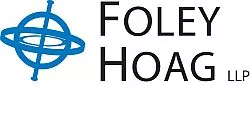- within Media, Telecoms, IT and Entertainment topic(s)
Key Takeaways:
- On March 12, 2025, the staff of the U.S. Securities and Exchange Commission ("SEC") issued a no-action letter clarifying that issuers relying on Rule 506(c) of Regulation D, the private offering safe harbor permitting general solicitation, can satisfy the rule's accredited investor verification requirements through investor self-certification when the investor is making an investment equal to or above a minimum amount.
- Historically, a minority of offerings have relied on Rule 506(c) because of the requirement to "verify" accredited investor status through objective means. This no-action letter provides an alternative path for compliance with Rule 506(c), which offers additional flexibility for issuers that wish to rely on this safe harbor.
Rule 506(c) permits issuers to offer securities through a general solicitation of investors, but issuers must take reasonable steps to verify that all purchasers are accredited investors. Historically, issuers have had limited guidance from the SEC regarding how they can ensure compliance with the verification requirement under the rule. As a result, some issuers have avoided relying on Rule 506(c).
In its recently published no-action letter, the SEC staff stated that merely obtaining investments that meet or exceed certain minimum thresholds, when paired with related written representations from investors, can be a reasonable means to verify the accredited status of those investors. Minimum investment amounts should be at least $200,000 for natural persons and at least $1 million for legal entities. Such written representations should affirm that (i) the purchaser is an accredited investor1 and (ii) the purchaser's minimum investment amount is not financed in whole or in part by any third party for the specific purpose of making the particular investment in the issuer. Additional representations may be necessary for some entities, such as a purchaser that is accredited only because all of its owners are accredited.
Importantly, the issuer must not have any knowledge of facts indicating that a purchaser is not an accredited investor or that the investment is financed by a third party for the purpose of making the particular investment.
Because this new guidance greatly simplifies the process for verifying accredited investor status, Rule 506(c) offerings may become significantly more attractive to issuers.
Footnote
1 The purchaser must be an accredited investor under Rule 501(a)(5) or (a)(6) if such purchaser is a natural person, or under Rule 501(a)(3), (7), (8), (9) or (12) if such purchaser is a legal entity.
The content of this article is intended to provide a general guide to the subject matter. Specialist advice should be sought about your specific circumstances.





